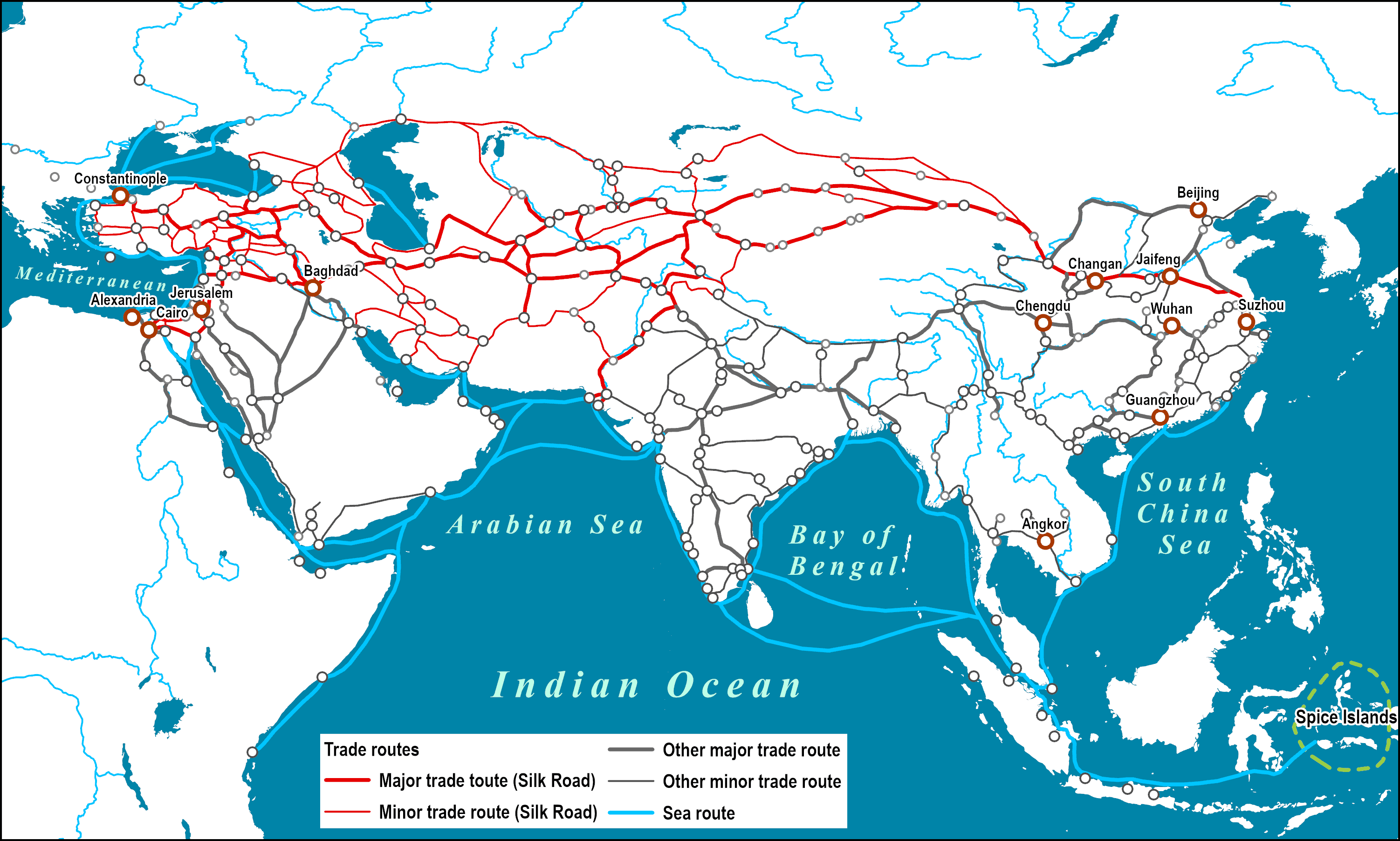The Silk Road and the Spice Trade were two major trading routes that impacted global exchange and cultural exchange. The Silk Road was an ancient network of trade routes that connected China, Central Asia, the Middle East, and Europe, while the Spice Trade was centered around the Indian Ocean and connected the East Indies, India, Africa, and Europe. The Silk Road facilitated the exchange of ideas, technologies, and religions, while the Spice Trade introduced new spices and flavors to different regions and contributed to the rise of European imperialism. Both routes have left lasting legacies that continue to shape the world today.
The Silk Road vs. the Spice Trade: Two Major Trading Routes Compared
Over the course of human history, trade and commerce have been vital components of societal development, connecting different cultures and economies across vast distances. Two of the most famous and significant trading routes in history are the Silk Road and the Spice Trade. While these routes served different purposes and connected different regions, they share many similarities and differences in terms of their impact on global exchange and cultural exchange. Here, we will examine the Silk Road and the Spice Trade in detail, comparing and contrasting their respective histories, impacts, and legacies.
The Silk Road: A Brief Overview
The Silk Road was an ancient network of trade routes that connected China, Central Asia, the Middle East, and Europe. The Silk Road began in the second century BCE and continued until the 14th century CE. The route was named after the silk trade, as silk was one of the major goods that was transported along the road. However, many other goods were also exchanged along the Silk Road, including spices, textiles, precious metals, and luxury items. The Silk Road was a vital conduit of cultural exchange, as well as economic exchange. It facilitated the spread of ideas, technologies, and religions across the globe.
The Impact of the Silk Road
The Silk Road had a profound impact on the societies that were connected by it. This network of trade routes fostered the development of a global economy, in which goods, money, and ideas could flow across vast distances. The Silk Road allowed for the exchange of both luxury and everyday goods, which spurred the development of new markets, craftsmen, and merchants. Additionally, the Silk Road facilitated the spread of Buddhism, Islam, and Christianity across Asia and Europe. The exchange of ideas and religions along the Silk Road helped to create a more connected, cosmopolitan world.
The Spice Trade: A Brief Overview
The Spice Trade was another major network of trade routes that operated between the 7th and 18th centuries. The Spice Trade was centered around the Indian Ocean and connected the East Indies, India, Africa, and Europe. The trade was characterized by the exchange of spices, particularly pepper, cinnamon, cloves, and nutmeg. However, other goods were also exchanged along the Spice Trade routes, including textiles, ivory, and precious stones.
The Impact of the Spice Trade
The Spice Trade had a significant impact on the global economy and the development of international trade. The Spice Trade helped to create a culture of luxury consumption, as spices were prized for their flavor, scent, and medicinal properties. The Spice Trade also contributed to the rise of European imperialism, as European powers sought to control the production and distribution of spices at the source. Additionally, the Spice Trade helped to shape the global food culture, as new spices and flavors were introduced to different regions.
Comparing and Contrasting the Silk Road and the Spice Trade
While the Silk Road and the Spice Trade share many similarities in terms of their impact on global exchange and cultural exchange, there are also some key differences between the two trading routes. Firstly, the Silk Road was much longer and covered a much larger geographic area than the Spice Trade. The Silk Road also existed over a much longer period of time than the Spice Trade. Additionally, while both the Silk Road and the Spice Trade facilitated cultural exchange, the Silk Road had a broader impact in terms of the spread of religion, ideas, and technologies. The Spice Trade, on the other hand, had a more specific impact on food culture and the luxury market.
Conclusion
In conclusion, the Silk Road and the Spice Trade were two of the most significant trading routes in human history. Both routes connected different cultures and economies across vast distances and contributed to the development of a global economy. However, the Silk Road and the Spice Trade were distinct in terms of their histories, impacts, and legacies. The Silk Road was a vital conduit for cultural exchange and helped to shape the development of significant religious and economic movements, while the Spice Trade was focused on the consumption and distribution of luxury goods, particularly spices. Ultimately, both the Silk Road and the Spice Trade have left lasting legacies that continue to shape our world today.
